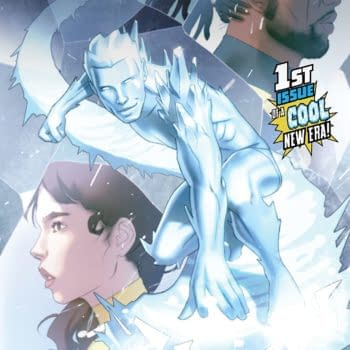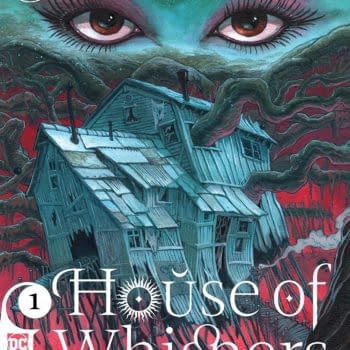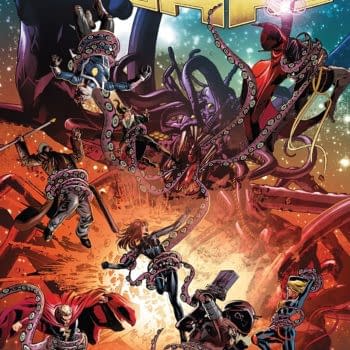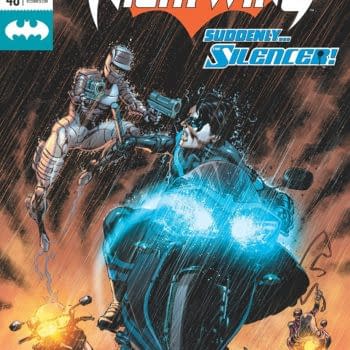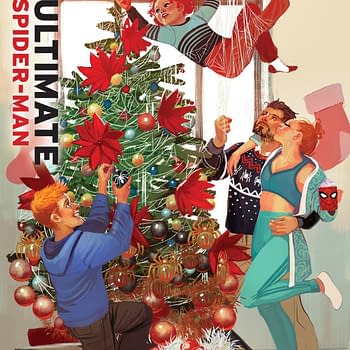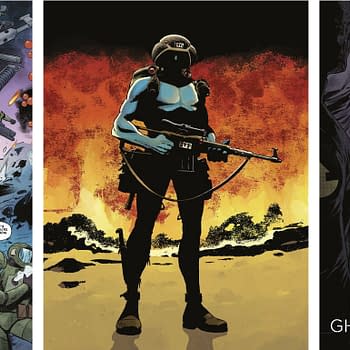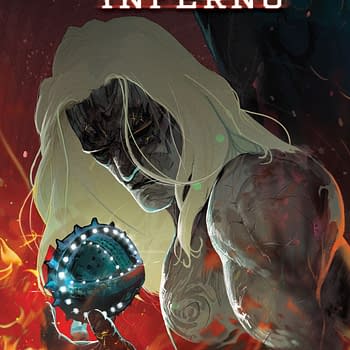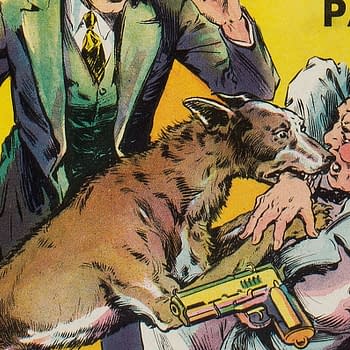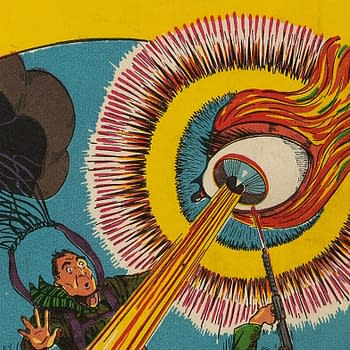Posted in: Comics, Marvel Comics, Review | Tagged: achebe, black panther, chadwick boseman, christopher priest, everet ross, joe quesada, kraven the hunter, mark texeira, martin freeman, marvel knights, Marvel Studios, ryan coogler, T'Challa, the avengers
5 Days of Black Panther, Day 2: Christopher Priest's Black Panther #1-12
Let's continue our celebration of the King of Wakanda with a look at what many consider to be the best run of Black Panther, Christopher Priest's Marvel Knights series from 1998.
This series centers around Everett K. Ross, a federal employee who is tasked with being the U.S government attaché for T'Challa when the king comes to the States for a visit.
For those keeping score, Everett Ross is Martin Freeman's character from Captain America: Civil War and Black Panther. No, he doesn't have any relation to General/Secretary Ross, who was ironically William Hurt's character also from Civil War.
Off-topic but Hurt returning as General Ross in that movie really had me hoping for Red Hulk.
Anyway, T'Challa is in the United States to investigate the death of a little girl named Jamie Robins. She was supposed to be a beneficiary of a charity called the Tomorrow Fund, and the Black Panther met her and even took a picture with her for a press release.
He leaves at an inopportune time, as Wakanda itself is in strife. Much of its borderlands are filled with refugees from ethnic wars across Africa. The Wakandans are unhappy with the refugee presence, and many of them are fighting amongst themselves.
Among the refugees is a man named Achebe. Achebe is a charismatic reverend who manages to establish himself as an interim ruler in T'Challa's absence. He showed active content for T'Challa when they once met and works to have the king killed. Hunter, T'Challa's half-brother and the White Wolf, also resurfaces in America during the Black Panther's visit.
Black Panther clashes with gang-bangers, law-enforcement, mercenaries, and even Kraven the Hunter during his time in America. He also learns that there are far more formidable and dangerous forces behind Achebe's rise to power.
I won't go into full detail on the entire story since this one is more recent (20 years, but still).
The first thing that struck me, aside from the focus on Ross instead of T'Challa, is the bone-dry humor throughout the comic. This isn't a Bendis story with a lot of one-liners and interplay between characters. Priest riddles this book with awkward, dry humor. The jokes don't linger long either; they are just presented, and the comic moves onward.
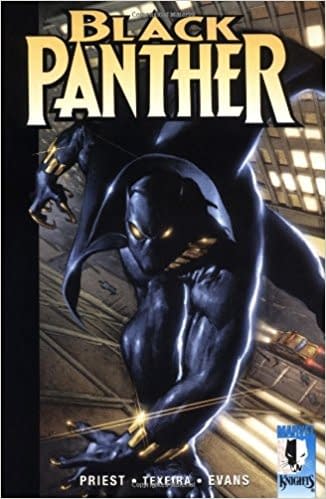
Much of the humor surround the inept yet cynical Everett Ross. He functions as a combination levity character and audience-surrogate able to balance the ever-stoic and intimidating King T'Challa. I was pretty reticent to him as a character at first, but, as the story went on, the cleverness of this character became more apparent. While the potential for interiority of a complex and fascinating character as T'Challa is sacrificed, you also get the rare framing of a superhero tale from a character that isn't the main protagonist.
Usually, in a superhero comic, a story is either framed by the title character or a chatty omnipotent narrator. As such, the quirks of a character or story can become normalized by the logic of the main character. Here, we get a lot of lines of Ross reminding us how fantastical and weird this all is. T'Challa comes from a land filled with super science miracles, and he dresses like a cat and beats up people. That's both amazing and strange, and we wouldn't get that if T'Challa were the narrator. This is all just another day in the life for him.
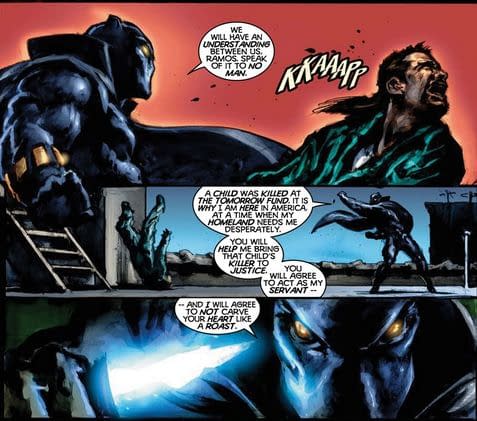
It also provides a less sympathetic eye when T'Challa starts doing things that ruffle the feathers of the U.S government, which also forces Ross to choose sides.
Ross' narration can be pretty hard to follow; he's established as a less-than-optimal narrator in the first issue. It can be confusing and obfuscating. I'm not sure it serves a purpose in a collected edition beyond a joke. Presumably, the flash forwards were supposed to help sell the series to readers on its initial release.
Zuri is another semi-comedic character character. He was a friend of T'Chaka. He's an old traditionalist who also happens to be built like a tank.
This was also the first appearance of the now-legendary Dora Milaje, the woman-warriors who work directly under T'Challa. The were "brides-to-be" in their initial appearance. T'Challa kept them around as protectors and to keep two rival factions at bay. They were awesome ass-kickers too, and that hasn't changed since.
Let's move onto Achebe, because this is the weirdest possible villain one could ever imagine for Black Panther, and that includes Man-Ape.
Achebe is somewhere between the Joker, the Ventriloquist, and Reverend Stryker. He's also drawn very much like the Joker, except Achebe is bald and has massive ears. This really catches you off-guard in the hyper-realistic-with-a-tinge-of-noir Mark Texeira art.
Achebe also has a small hand-puppet of himself whom he talks to, and he becomes more erratic as the story progresses. This goes back to the sudden and awkward dry humor that fills these 12 issues. Black Panther is so straight and grounded as a character while Achebe is so strange and drawn like a caricature. There's never any real explanation for Achebe other than his education and the possibility of a blood-soaked backstory. The contrast isn't even really the point like with Batman and the Joker. T'Challa doesn't even really acknowledge the eccentricities when dealing with Achebe. It's like you're the only one who notices that Achebe is frigging weird. Can a comic gaslight its reader?
Like Ta-Nehisi Coates' current Black Panther run, the pacing is very slow and prone to digressions. As awesome as the fight with Kraven is, it doesn't really lead anywhere important. Also like (most of) Coates' run, Priest's take on the Panther manages to stay engaging with a winding plot that justifies most of its length. It's interesting, and its tension rises and falls with each new revelation and confrontation. Achebe isn't even introduced until #3 and isn't brought down until #11. The first 12 issues are single arc.
Priest's Panther is actually an inverse of Jack Kirby's run. Where Kirby's take on the book was a wild and surreal venture that actually didn't dive into the protagonist all that much, Priest's run is a more grounded and ponderous run where the personality of T'Challa is dove into.

Appropriately, it touches on the issues of race. Black Panther is a rich, genius, and black Avenger. He is world-famous and the sign that a black man can make it. He may be African and not African-America, but he is still a symbol for the downtrodden people of color in New York City. As such, they become angry when the U.S government begins to turn on T'Challa.
Again, for the people in the back, politics are not new to comics. They often took sides on social issues, and superhero comics would be far less appealing if they were just about people in tights punching other people in tights.
The book goes through several artist changes in these 12 issues alone. Mark Texeria covers the first four issues, followed by Vince Evans for an issue, then Joe Jusko for another three with Amanda Connor doing some pages in the third Jusko issue, Mark Manley for two issues after that, and finishing up with Mark Bright with the last two. I guess books having trouble keeping an artist isn't completely new.
None of the artists are strictly bad. I quite enjoyed Texeira and Jusko's textured and realistic issues. They gave the world an oppressive and dangerous feeling. Connor's section is a flashback to Captain America #100, and her line work actually works as a recreation of comic art. The inking and coloring is what breaks the façade there. Manley's work is oddly similar to Connor's, and it feels like a weird outlier in this whole saga. Bright returns it to something closer to the Texeira and Jusko work, even if it mostly resembles like conventional early-2000's comic art.
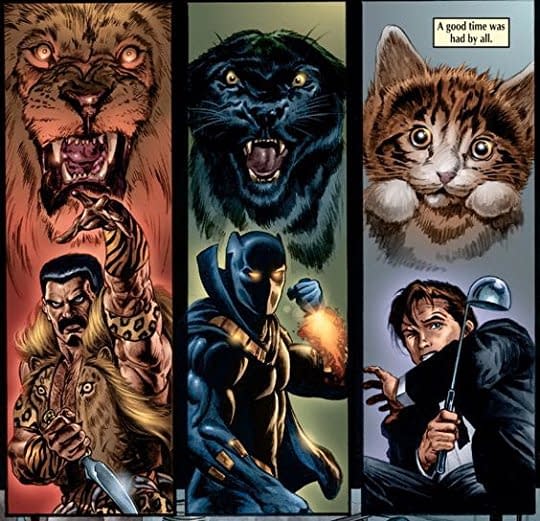
That being said, the art is mostly quite good, and I only really had complaints with shifting in Manley's more cartoonish style.
The inking and colorwork is nothing to sneeze at either. The inking is especially fantastic in the shadow-heavy Texeira and Jusko issues. The color artists always play off the tone Priest and the artist is going for well, and, arguably, the coloring in the Manley issues captures the vibe of the story better than Manley himself.
I want to reiterate that Manley's art style isn't bad at all; it's just ill-suited to a grounded and dower story like this.
In the end, the first twelve issues of Christopher Priest's Black Panther aren't what I expected, but they are what I hoped for. Priest brings a lot of clever storytelling tactics, engaging political tension, and a lot of really dry humor. In other words, it's a compelling and enjoyable read with a cavalcade of talented artists, with Texeira and Jusko standing out in particular. Check this one out if you want some fantastic Black Panther reading material. I highly recommend it.


